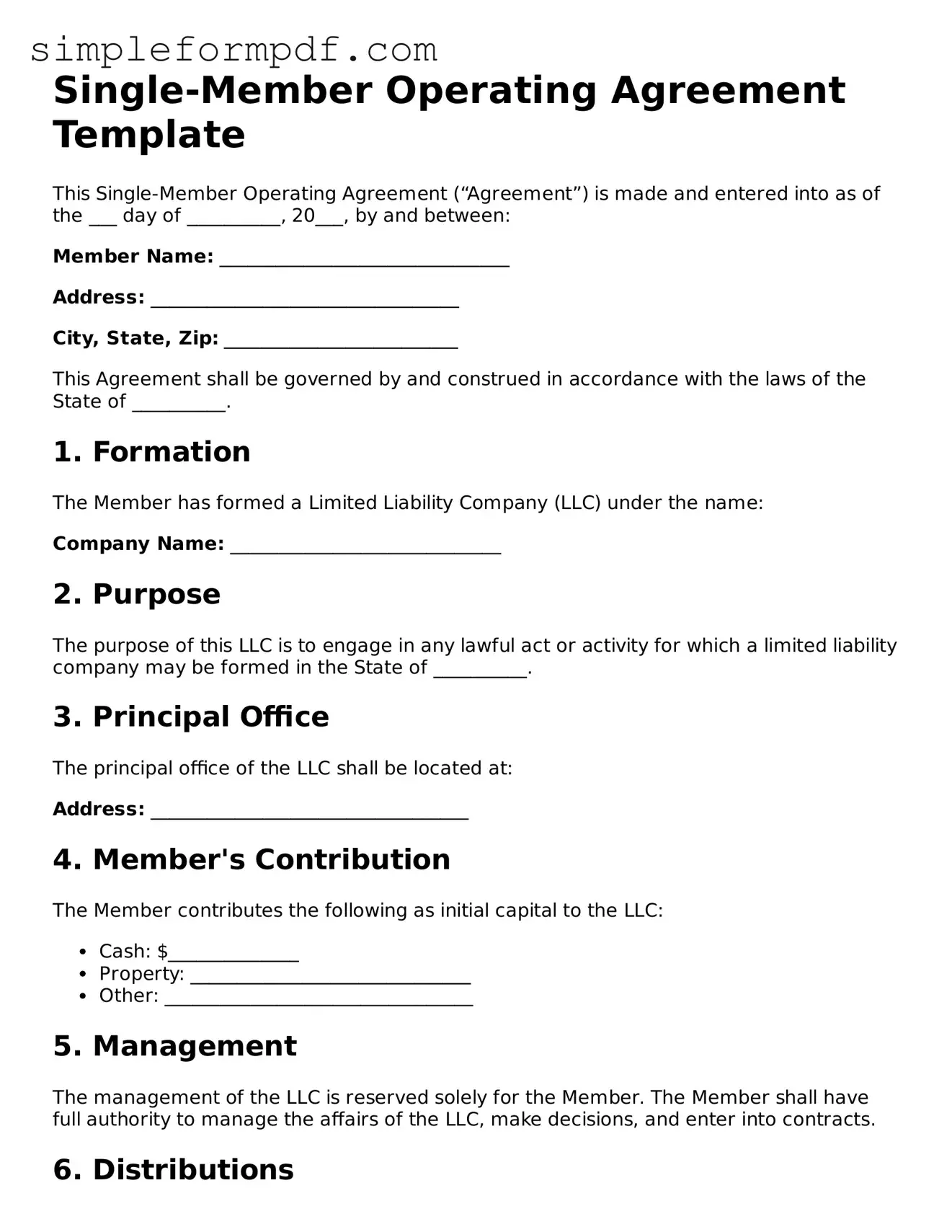Single-Member Operating Agreement Template
This Single-Member Operating Agreement (“Agreement”) is made and entered into as of the ___ day of __________, 20___, by and between:
Member Name: _______________________________
Address: _________________________________
City, State, Zip: _________________________
This Agreement shall be governed by and construed in accordance with the laws of the State of __________.
1. Formation
The Member has formed a Limited Liability Company (LLC) under the name:
Company Name: _____________________________
2. Purpose
The purpose of this LLC is to engage in any lawful act or activity for which a limited liability company may be formed in the State of __________.
3. Principal Office
The principal office of the LLC shall be located at:
Address: __________________________________
4. Member's Contribution
The Member contributes the following as initial capital to the LLC:
- Cash: $______________
- Property: ______________________________
- Other: _________________________________
5. Management
The management of the LLC is reserved solely for the Member. The Member shall have full authority to manage the affairs of the LLC, make decisions, and enter into contracts.
6. Distributions
All profits and losses of the LLC shall be allocated to the Member. Distributions shall be made at the discretion of the Member.
7. Indemnification
The LLC shall indemnify the Member against any losses, expenses, or liabilities incurred in connection with the LLC, except in cases of gross negligence or willful misconduct.
8. Amendments
This Agreement may be amended only by written agreement signed by the Member.
9. Miscellaneous
- This Agreement constitutes the entire understanding between the parties and supersedes all prior agreements.
- If any provision of this Agreement is held to be invalid or unenforceable, the remaining provisions shall continue in full force and effect.
- This Agreement may be executed electronically and in one or more counterparts.
IN WITNESS WHEREOF, the undersigned Member has executed this Single-Member Operating Agreement on the date first written above.
Member Signature: ______________________
Date: _____________
